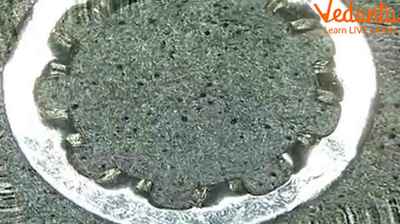The Story About Metal Whiskers and Their Formations
We know that there are many things that exist hidden from our eyes. One such thing is a metal whisker. The name of this thing can be intriguing to our common minds. These are metallic projections developing on a metallic surface on anything.
In this blog, we will find out what metal whiskers are and how they are formed naturally. Do they have the potential of causing an impact in any form? Are they useful or harmful to us? Let us find out ahead. But first, let us understand what these things are.
What Are Metal Whiskers?
As the name suggests, metal whiskers are the tiniest developments on a metallic surface that grow. They grow on the surfaces of things that are made of metals. They are so minute that we cannot identify or detect them with our naked eyes.
When put under a microscope, we can observe the existence of a new world. A metallic surface may sound inanimate but it can show growth patterns as cat and dog whiskers do. Jokes apart, these projections from the metallic surface imitate a strong hair or whisker. It means they form a cluster of whisker-like projections on the metals.
The fun part is that the whiskers can only form when a metallic surface is in use. When an object, say a machine or an instrument is used, these whiskers will be produced on the surface. They resemble the hair-like projections we find on the dog’s or cat’s face underneath and beside the nose.

Metal Whiskers
Structures of Metallic Whiskers
Now that you know and understand the metal whiskers' meaning, let us tell you that these hair-like microscopic projections are not more than a few microns in thickness. The thickness varies considering the type of metal and the conditions in which it is growing. As per the records, the range of thickness varies from 10 um to 100 nm.
Well, what about their length? The thickness of these whiskers cannot be detected with our common eyes. The length can be up to 10 mm in size. It means that a cluster of such metallic whiskers can be visible to our naked eyes. They look like whiskers and will be made of the constituent metal of an object, machine, instrument or any metallic surface.
When and Why Do Metal Whiskers Grow?
The strange part of this scientific phenomenon is that we don’t know why these whiskers grow. Researchers have been clueless regarding the development of such hair-like growths on metal surfaces. They also don’t know when these metallic hairs will start growing.
The only thing we are aware of is that only metallic surfaces under use will form such things. In fact, scientists also don’t know whether they will occur or not. There are many theories given by chemists and metallurgists but none has any particular proof.
Some theories suggest that contamination can be the reason behind the formation of whiskers on metals. Some suggest that the conductance of electricity has caused such problems. We certainly know that human whiskers are not a thing but canines and felines do have such things. However, in the case of metal whiskers, we are totally clueless.
The most common whiskers that are found are tin whiskers. As most of the common metallic objects we use have tin in them, the commonest form of whiskers is made of tin.
The History of Metal Whiskers
How did we come to know about these things? When were whiskers detected? It was back in the 1950s that scientists and researchers detected a hair-like growth in metals. They started researching but could not find any particular reason behind such natural formation of metal projects. Since then, we have found different types of metal whiskers forming due to the presence of zinc, cadmium, germanium, etc.
One of the common theories that most scientists and researchers want to believe is that the compactness of the electronic circuits we use these days might be the cause. Due to the extreme closeness of the metallic surfaces in a circuit, there might be a metallic projection occurring due to electric fields and connecting closest metallic surfaces causing short circuits.
We used lead to stop the formation of whiskers. Lead was widely used to stop whiskers from growing on tin surfaces. Lead has been banned as it has a poisonous effect on animals. It causes heavy metal poisoning and pollutes the environment like anything. Another reason metallurgists believe behind the formation of whiskers is compressive stress. Due to compressive stress, even lead has shown the formation of whiskers.
The Power of Metal Whiskers
They can be minute and look like bubbles on metal surfaces. But do you know metal whiskers can take down a satellite? You might be surprised! How can a small hair-like thing with a micron or two in diameter damage and bring down an entire satellite? Let us explain!
The formation of metal whiskers is a huge threat for almost any machine we have made to date. It is a bigger threat, especially to the delicate electronic chips and motherboards. These whiskers are made of metal. Hence, they are conductors of nature. Imagine the natural growth of such whiskers penetrating the adjacent chips, motherboards, devices, etc. that are compacted closer to each other.
The connection will cause short circuits and even fire. An entire satellite will stop working and will be compromised due to the formation of such tiny metallic hairs.
Conclusion
We only know that the metal whiskers are made of the constituent metals of a metallic surface. We also know that these whiskers form only when a metallic surface is used. We don’t know when and why these whiskers are formed. It is impossible to stop them from growing unless we know the reason and thus they surely pose a threat to delicate machinery and equipment.







